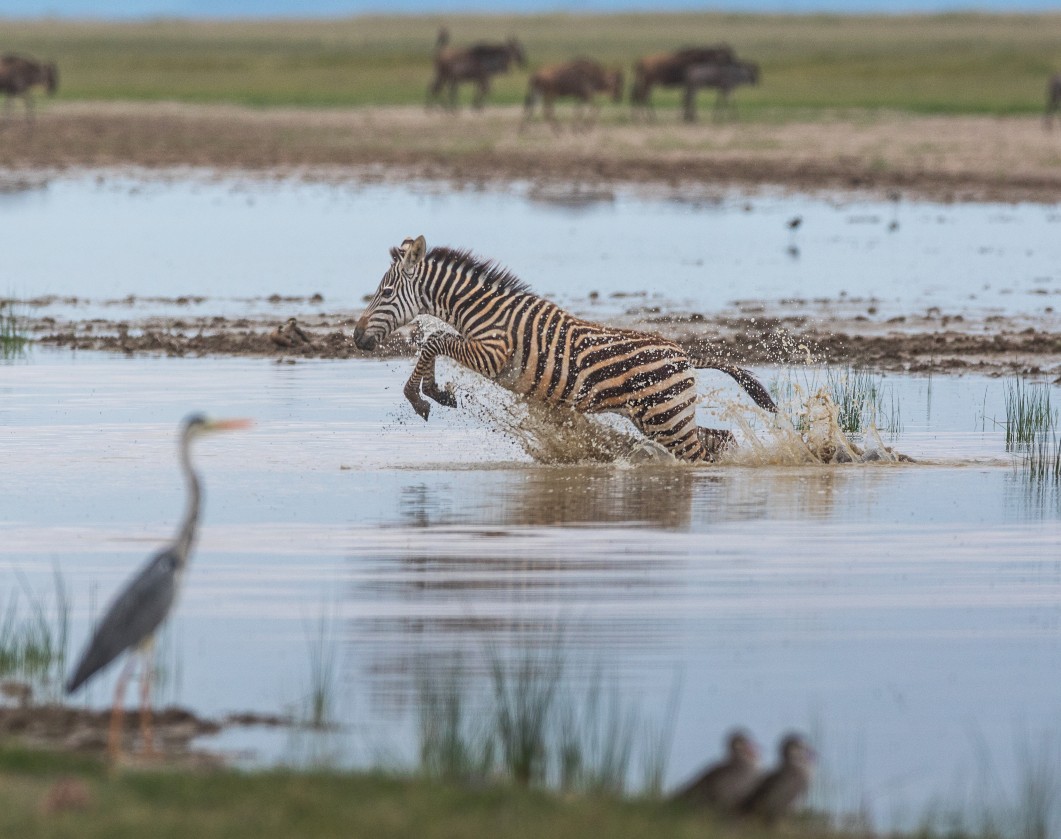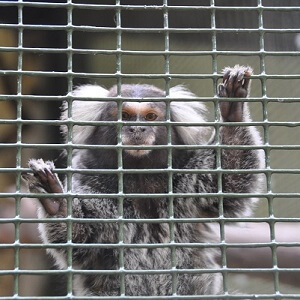Are sustainability and wildlife linked? An in-depth look at sustainable wildlife conservation
ARE SUSTAINABILITY AND WILDLIFE LINKED? AN IN-DEPTH LOOK AT SUSTAINABLE WILDLIFE CONSERVATION
Is there a link between sustainability and wildlife?
Sustainability is a widely used term which not many actually know the meaning of. As a wildlife charity, Born Free are passionate about creating a sustainable future for animals and have a desperate need to share how sustainability can lead to positive change within the wildlife around us and the importance of reducing our impact on the environment for generations to come.
In this blog, we share with you exactly what sustainable wildlife conservation means from an environmental point of view so you can understand its importance, and the power in sustainable wildlife management.
What is sustainability?
The Brundtland Report from 1987 states there are 3 types of sustainability: human, social, economic and environmental. The meaning of sustainability in all areas is meeting our own needs without compromising the ability of future generations to meet their own needs.
Over the last century, our planet has experienced dramatic changes: increasing human populations, habitat destruction and the resulting climate change have put immense pressure on ecosystems. People are not separate from nature; we are part of it, so we must reduce our environmental impact for the benefit of both nature and us. Reducing our impact is the foundation of ‘sustainability’. Sustainable conservation protects wildlife populations and the environment for future generations, whilst simultaneously benefitting peoples’ livelihoods and cultures.
What does sustainability mean to wildlife?
When it comes to wildlife, sustainability requires a stable population of various species over the duration of many years. If done correctly, it allows different types of wildlife species to thrive and live comfortably. As humans, we play an important role on wildlife and controlling different species; it’s important that we take into consideration the future generations so that humans and wildlife will be able to coexist.
Population of different species can vary dramatically at different times in the year. Typically, during mating season, animals will have a greatly increased population, and by the end of winter this has decreased significantly.
Unfortunately, a lack of care in our treatment to the world over decades has led to increased damage to the environment. Global warming is now a huge environment issue we face, and various species have sadly lost habitats, leading to their endangerment. In addition to this, wildlife also faces issues such as land degradation and deforestation.
Ultimately, sustainable conservation not only protects wildlife in the present, but also reduces our environmental impact, protecting wildlife for the future. Sustainable practice takes many forms. For example, reducing our reliance on natural resources protects habitats and limits competition for resources with wildlife, whilst mitigating human wildlife conflict builds tolerance and coexistence, reducing our impact on wildlife populations and protecting peoples’ livelihoods.
Although best known for our animal welfare and conservation work, Born Free is also committed to the sustainable management of terrestrial vertebrate wildlife in all geographic areas.
How sustainability can save wildlife
Humans and wildlife both massively depend on each other; if one is to suffer then so will the other. Currently, Illegal trade and habitat loss are the two main sustainable wildlife management issues that need to be tackled to manage sustainability and save wildlife.
Habitat Loss
One of the main ways we can help reduce habitat loss is to prevent the amount of carbon emissions we produce. Many companies are now pressured into looking for renewable ways to run their business and limit the pollution they cause, in an attempt to counteract rising global temperatures. However, it’s unclear on how much difference this can make as some scientists suggest the damage is irreversible. The ocean is the largest ecosystem we have and continued damage from increasing acidity levels harms this environment as well as the fish we consume.
We also need to reduce deforestation and the amount of land we are sacrificing simply for monetary gain. The places that wildlife call home are lost, which leads the animal population reducing and even worse, extinction.
Illegal Trade – Poaching
Poaching for illegal trade has been an ongoing issue for generations and has led to the near extinction of many animals like the polar bear and great white shark. Failing to address this issue urgently could lead to further extinctions within the next few decades.
How wildlife contributes to sustainable development
As well as ethical motives to drive wildlife sustainability, we as humans greatly benefit from wildlife too. There are multiple socio-economic benefits such as food, medicine, and of course tourism. All of these allow humans sustainability in both our economy and in turn, our survival. As an indicator of this importance, tourism alone has contributed to 4.67 trillion US dollars to global economy. Wildlife is a huge motivator for tourism and it’s with money generated like this, that companies and agencies can continue their support towards ecosystems.
Maintaining a safe and sustainable environment for animals in the wild
There are studies devoted to the sustainability of wildlife and how we can better look after wild animals.
Phenology
This involves the study of how biological world times affect wildlife, for example through bird migration or animal hibernation. Global warming has led to changes in these patterns due to an increased temperature. Some of these effects can be seen in animals mating earlier in the year or birds returning early from migration. It’s an important region of study as it allows us understanding of animal behavioural patterns and the health of an ecosystem.
Food Webs and Bioaccumulation
Energy from food we eat originally comes from the sun, with plants photosynthesising and producing sugars. The plants are then consumed and as omnivores, we eat both plants and animals. A food web shows how energy is passed around and what nutrients each animal in the food web is receiving.
Natural Disturbances
A natural disturbance is an event that is caused externally from humans or wildlife, for example a tornado or tsunami. If not treated quickly, these disturbances can greatly harm wildlife and ecosystems. However, a healthy ecosystem can recover well from these disturbances.
Corridors and Flyways
These describe the routes that animals take when on the move. These can be used when a species is moving to a safer location it needs to survive, or even just a way to access food and water. It’s important to make sure wildlife has the room it needs to survive and has clear access to essential survival tools.
Born Free’s Animal Welfare and Sustainability Mission
In the Amboseli ecosystem, Kenya, where Born Free has worked to protect wildlife since 1992, we have distributed sustainable ‘smart’ elements, including 4,985 energy-saving stoves and 225 water-storage structures, to bomas since 2016 – working with local communities to reinforce their traditional livestock enclosures to prevent attacks from wild predators. These smart elements decrease reliance on natural resources, including threatened acacia species and precious water in a water-scarce region, lessening the impact people have on the wonderfully unique Amboseli ecosystem and helping to sustain pastoralist livelihoods.
Sustainability is intertwined throughout the Satpuda Landscape Tiger Partnership (SLTP), India, established by Born Free in 2004. Initiatives including cattle stall-feeding promote coexistence and ensure the persistence of both tiger populations and peoples’ livelihoods in the Satpuda landscape: “Sustainability is key to the long-term survival of the forests and ecosystems of central India, including tigers which are the focus of the SLTP. By undertaking sustainable practices, communities not only ensure that biodiversity is safe, but also their livelihoods because they depend directly or indirectly on the forests” – Yashvardhan Dalmia, SLTP
Our new project devoted to great ape conservation in the Dja Biosphere Reserve, Cameroon, has sustainability built in at every level. In this region, unsustainable harvesting of natural resources – in particular, bushmeat hunting and slash-and-burn of virgin forest to grow crops – has detrimental impacts on biological diversity, ecosystem integrity and peoples’ livelihoods. Our project is working to empower communities to eliminate unsustainable practices by providing skills-training for sustainable livelihoods including pepper and cocoa cultivation and planting native fruit-trees. The latter will reforest large areas damaged by slash-and-burn, whilst providing a sustainable food source, increasing the security of their livelihoods and the local environment.
Our mission is to help create a more balanced and harmonious environment, where essential resources such as food and water are widely available to humans and wildlife alike. We also work to prevent illegal wildlife trade to counter the ever-increasing threat they face. You can find out more about our aims and how we have helped wildlife sustainability education.


